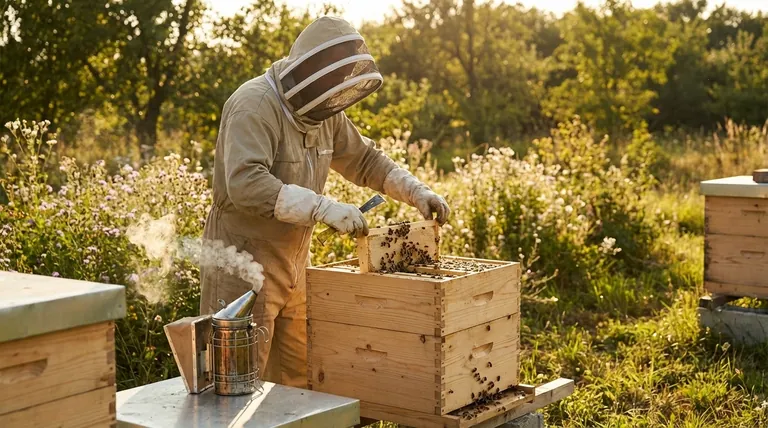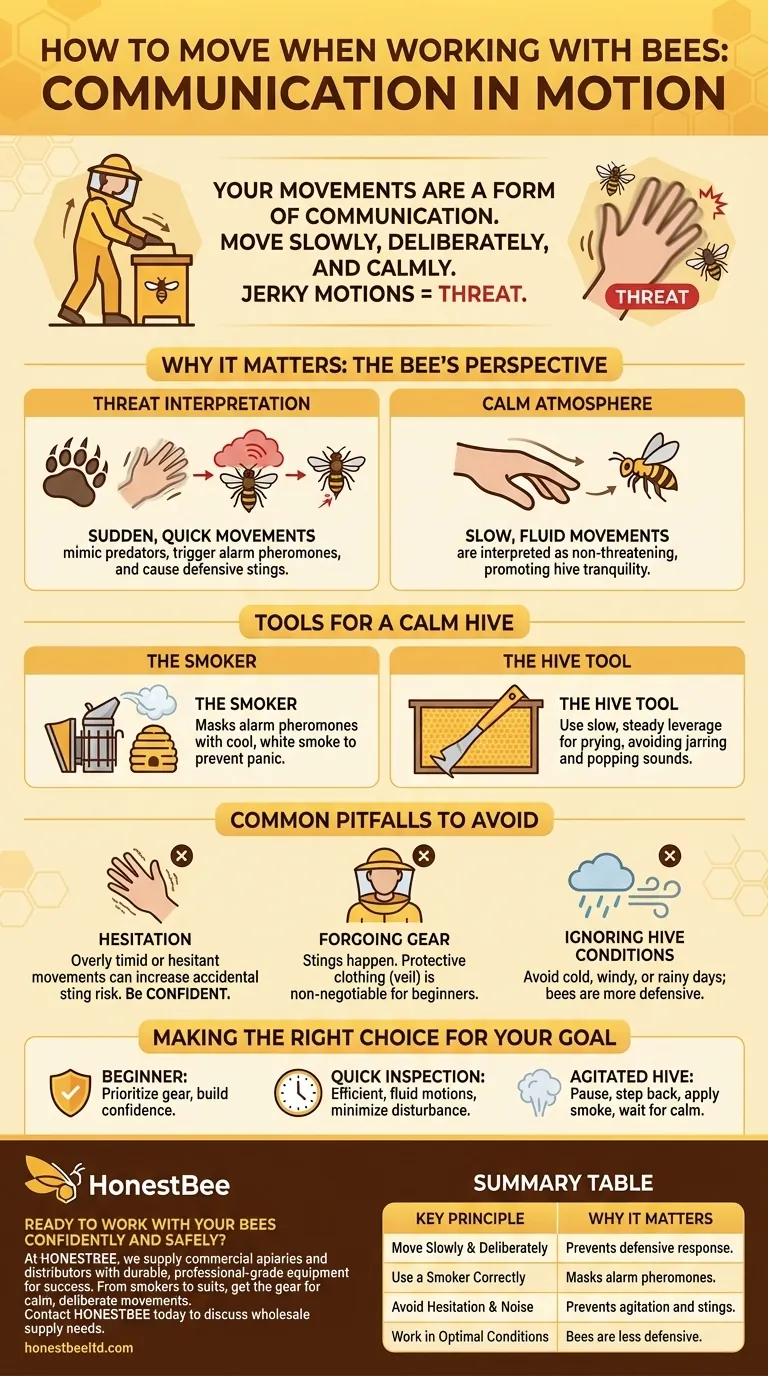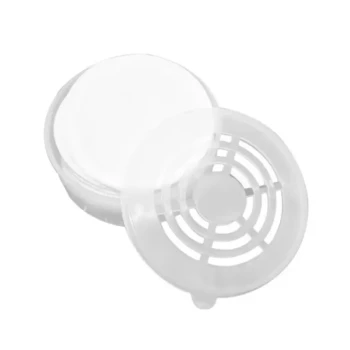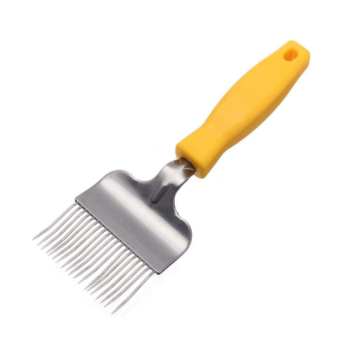When working with bees, your movements are a form of communication. The most critical rule is to move slowly, deliberately, and calmly. Bees interpret fast, jerky motions as a potential threat, similar to a predator, which can trigger a defensive response. Remaining calm and composed is the key to preventing stings and ensuring a peaceful hive inspection.
Your primary goal is to project calm and control. Bees interpret slow, fluid movements as non-threatening, while fast, jerky actions engage their defensive instincts. Your demeanor directly influences the demeanor of the hive.

Why Your Movement Matters: The Bee's Perspective
Bees are not inherently aggressive; they are defensive. Their instinct is to protect their queen, brood, and honey stores. Understanding how they perceive their environment is crucial for safe handling.
Interpreting a Threat
Sudden, quick movements are interpreted by the guard bees as a direct threat. This action mimics the behavior of natural predators, like bears or badgers, causing the bees to release alarm pheromones and prepare to sting.
The Principle of Deliberate Action
Every motion you make should be smooth and purposeful. Avoid fidgeting, waving your hands, or swatting at a curious bee. Think of your movements as a slow, deliberate dance, where each step is planned and executed with care.
Maintaining a Calm Atmosphere
Your physical calm contributes to the overall tranquility of the hive. Loud noises, banging equipment, or dropping a hive box can startle the colony just as much as a sudden movement.
Beyond Movement: Tools for a Calm Hive
Correct movement is one part of a larger system for safe bee handling. Using the right tools correctly is equally important for maintaining a calm environment.
The Role of the Smoker
The smoker is your most important tool for communication. A few gentle puffs of cool, white smoke at the hive entrance and under the lid masks the alarm pheromones that bees release when they feel threatened. This prevents a defensive panic from spreading through the colony.
The Hive Tool as an Extension of Your Hand
A hive tool is used for prying apart frames and boxes sealed with propolis. Use it with slow, steady leverage. Avoid jarring the frames or making sudden popping sounds, which can agitate the bees.
Common Pitfalls to Avoid
Even with the best intentions, new beekeepers can make mistakes. Being aware of these common pitfalls is essential for building confidence and competence.
The Mistake of Hesitation
While you should move slowly, you must also be confident. Overly timid or hesitant movements can result in bees crawling on your hands and suit for longer periods, increasing the chance of an accidental sting if one gets pinched. The goal is slow and deliberate, not fearful and shaky.
Forgoing Protective Gear
No matter how calm you are, stings can happen. Wearing proper protective clothing, especially a bee veil, is non-negotiable for beginners. This gear allows you to remain calm and focused on your movements, even if a few bees become defensive.
Ignoring Hive Conditions
Bees' temperament can be affected by weather, time of day, and the availability of nectar. Avoid working the hives on cold, windy, or rainy days, as the bees will be more defensive. The best time is typically a warm, sunny afternoon when many foragers are out of the hive.
Making the Right Choice for Your Goal
Your approach should adapt slightly based on your experience and the task at hand.
- If your primary focus is learning as a beginner: Prioritize wearing full protective gear to build confidence, allowing you to practice slow, deliberate movements without the fear of being stung.
- If your primary focus is a quick inspection: Be efficient and have your tools ready. Focus on fluid, purposeful motions to minimize the time the hive is open and disturbed.
- If your primary focus is dealing with an agitated hive: Immediately pause your actions, take a step back, and apply a few gentle puffs of smoke. Wait for the hive's buzzing to calm down before you proceed with slow, confident movements.
Ultimately, mastering your movements is about building a predictable and trusting relationship with your colony.
Summary Table:
| Key Principle | Why It Matters |
|---|---|
| Move Slowly & Deliberately | Fast, jerky motions mimic predators and trigger a defensive response from the bees. |
| Use a Smoker Correctly | Cool, white smoke masks alarm pheromones, preventing panic from spreading through the colony. |
| Avoid Hesitation & Noise | Confident, fluid motions and quiet handling prevent agitation and accidental stings. |
| Work in Optimal Conditions | Inspect hives on warm, sunny afternoons; avoid cold, windy, or rainy days when bees are more defensive. |
Ready to work with your bees confidently and safely?
Proper technique is built on a foundation of reliable, high-quality equipment. At HONESTBEE, we supply commercial apiaries and beekeeping equipment distributors with the durable, professional-grade tools needed for success.
From smokers and hive tools to full protective suits, our wholesale-focused operations ensure you get the gear that supports the calm, deliberate movements essential for hive health.
Contact HONESTBEE today to discuss your wholesale supply needs and equip your operation for a more productive and peaceful season.
Visual Guide

Related Products
- Wholesales Dadant Size Wooden Bee Hives for Beekeeping
- Professional Insulated Plastic Bee Hives
- Long Langstroth Style Horizontal Top Bar Hive for Wholesale
- Professional Insulated Winter Hive Wrap for Beekeeping
- Automatic Honey Flow Beehive 4 Frame Mini Hive for Beekeeping
People Also Ask
- What types of products are available for beekeeping needs? Essential Equipment for Apiaries & Distributors
- What are the characteristics of oil-based paint for beehives? Durability vs. Modern Practicality
- What is the best place to keep bees? Find the Perfect Apiary Site for Your Hives
- How often should the area under beehives be inspected and cleaned during the warm season? A Proactive Maintenance Guide
- What should you do if you find an ant nest near your beehive? Essential Strategies for Hive Protection



















